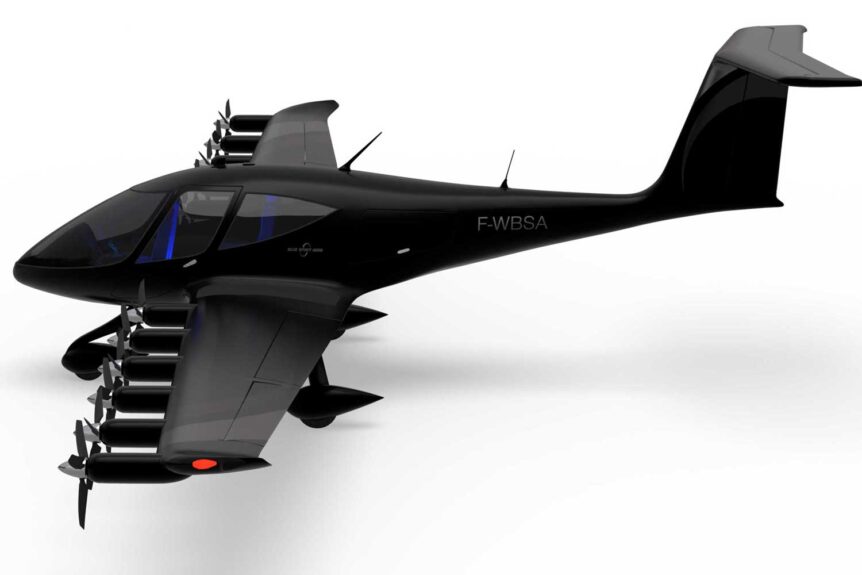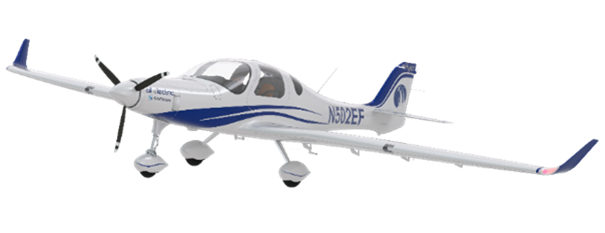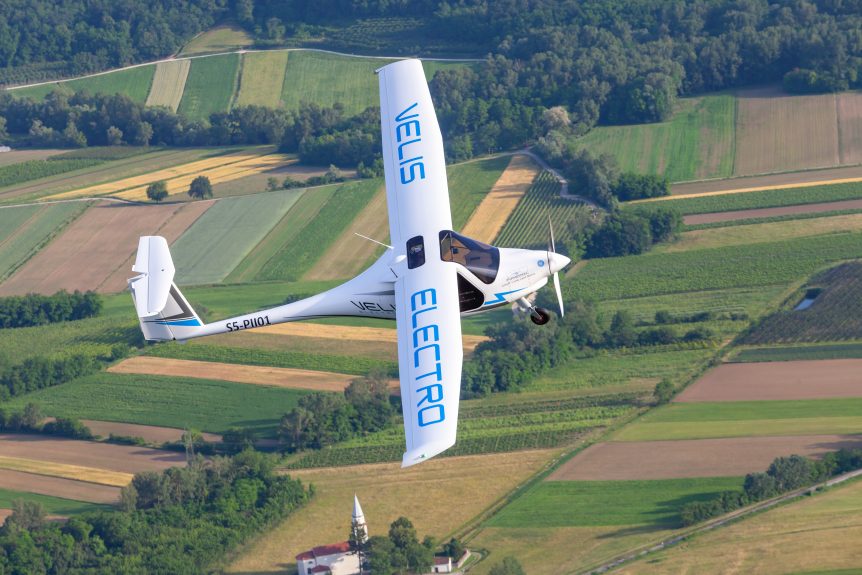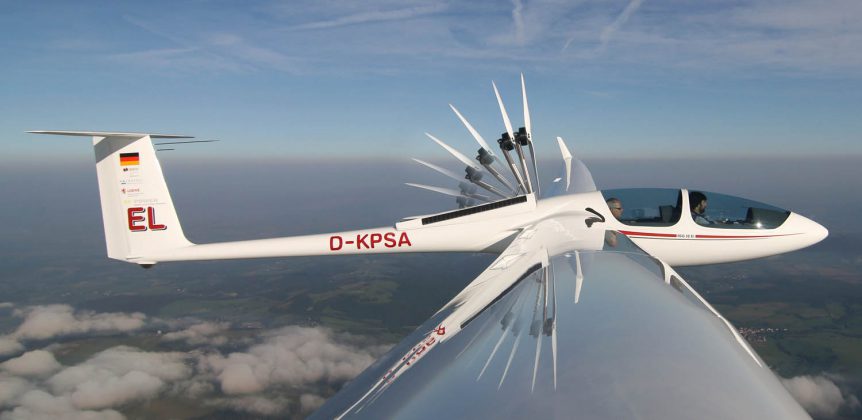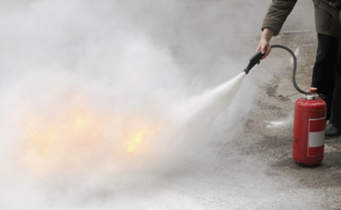Hydrogen capsules, quickly swappable and motor pods easily switched on a long wing share a common theme. H2-Mobile, a French web site, shared three stories that share forms of encapsulation, one pointing back to a story your editor wrote about a decade ago. An HUV (Hydrogen Utility Vehicle) from NamX A French-Moroccan company, NamX showed a car co-developed with Pininfarina, and the sleek sedan reportedly can hit 294 kilometers per hour (182 mph) and accelerate from zero to 100 kilometers per hour (62 mph) in 4.3 seconds. Most surprising, perhaps is the car’s method of storing energy. Michael Torregrossa, writing in H2-Mobile, reports that, “Present for the first time at the Paris Motor Show, NamX lifts the veil on its NAMX hydrogen capsule distribution device. Called CapXtores, this new network will begin its deployments in 2024.” Seemingly a larger version of a capsule battery distribution system created for Gogoro, a Taiwanese scooter manufacturer, the NamX concept car can be refueled …
Work Begins on Production eFlyer 2
For the last year or so, Bye Aerospace has grown a burgeoning order book, with over 700 aircraft on call, but only one or two real-world examples flying. That’s changing now, with a new motor from Safran and Composites Universal Group (CUG) assembling an actual production eFlyer 2 fuselage. Parts of the video may seem like comparing apples and bananas, or even cumquats, with aircraft of different missions and levels of development (the Airbus eFan having left the building years ago), but several points of interest remain. Where are 92 kilowatt-hours of battery hiding in the 662 kilogram – 1,459 pound airframe (empty weight)? That’s equivalent to the energy of an early Tesla S and probably a significant chunk of the total aircraft weight. A New Motor Bye has been busy formulating the design of is two- and four-seat aircraft, dropping its original plan to bedeck its wings with solar panels, and running though a gamut of available power plants. …
Happy Velis Electro News from Pipistrel
Taja Boscarol, Public Relations Manager for Pipistel Vertical Solutions, and Michael Coates, Master Distributor for USA, Australia & New Zealand, shared a lot of happy news this week about their Velis Electro. Electric Outsells Gasoline Powered Michael puts his news in enthusiastic, all-caps context. “The US has a new president, Europe is under siege from new Covid varieties, and Pipistrel is adding a SECOND SHIFT TO KEEP UP WITH PRODUCTION! “Did you know that in 2020 Pipistrel DELIVERED 111 (one-hundred and eleven) of the certified Pipistrel Velis electric aircraft, as well as many more Pipistrel ALPHA Electro aircraft? In fact, this year for the first time ever, Pipistrel produced more electric aircraft than gasoline powered!” More than 70 Pipistrel Velis aircraft are already on 2021’s order books, with many more anticipated through the remaining 11 months of the year. The second shift essentially means doubling production, and this of course leads to increased demand from suppliers. Michael adds, “Pipistrel is …
Schleicher’s Sustainable Flight for Two
Alexander Schleicher Segelflugzeugbau (sailplane maker) has been crafting high-performance soaring craft since its inception in 1927. Their latest creation, a two-seat, 20-meter (65.6 feet) span motorsegler, the ASG32 El, includes a 25 kilowatt synchronous motor driving a Schleicher-designed 1.55 meter (5 feet) retractable propeller. The motor is a “home help” device, a sustainer motor to keep the ASG 32 El aloft once it is launched by a winch or by being pulled by a towplane. The motor does not allow for self-launching. Its low power, coupled with the airplane’s clean design, does enable a 1.3 meter-per-second (255 feet per minute) rate of climb. The aircraft’s battery is sufficient for 20 minutes of all-out power or 100 kilometers (62 miles) of “sawtooth” flight, short climbs followed by longer glides, even with a full load of two pilots. A single control level raises the motor and propeller into operating position, and when pushed further, turns the motor on and controls the …
Two Battery Fires in Self-Launching Sailplanes
Klaus Burhard publishes a wonderful news and blog site promoting ultralight sailplanes. His German site has been the source for many blog entries by yours truly, and the latest items from Klaus are of concern to anyone involved with electric aircraft. He has reported in the last week on a disturbing incident with a UK-based HPH glass-wing 304eS/Shark FES “self-starter,” or self-launching sailplane. The airplane is a standard-class 15 meter (49.2 feet) wingspan plane. As seen in the video below, The FES (Front Electric Sustainer) motor on the nose swings a propeller which folds into the front contours of the sailplane when not powering the plane. When a pilot engages power, the rotation of the motor pushes the propeller blades out into the airstream. Two battery packs engineered by FES nest in a compact area behind the pilot. Each pack contains 28 high-power Kokam lithium-polymer batteries of 43 Amp-hours each wired in series to give 2.1 kilowatt-hours of energy. Packs …
Diamond Hybrid Drive – One Engine, Two Motors
Diamond aircraft seem to have been the go-to choice for electrification, with Boeing and Airbus fielding different versions powered by an array of powerplants. In 2008,Boeing’s fuel cell-powered craft, a DA-36 Dimona motorglider, “was modified by [Boeing Research and Technology Europe] (BR&TE) to include a Proton Exchange Membrane (PEM) fuel cell/lithium-ion battery hybrid system to power an electric motor coupled to a conventional propeller.” Airbus’ 2011 DA-36 “E-Star’s” propeller was powered by a 70kW electric motor from Siemens, with electricity supplied by a small Wankel engine from Austro Engine with a generator functioning solely as a power source. In 2014, Airbus showed an improved version of this craft at the Paris Air Show. Erik Lindbergh chose the Diamond HK-36 for his Powering Imagination testbed, using a donated YASA 750 motor for power. For all that electrifying experimentation, the airplane as normally configured with a Rotax engine has continued as a trainer and motorglider around the world. Now, a larger member …
China Permits Two-Seat Electric Aircraft
Jane Zhanf of Silk Wings Aviation (see note), an aircraft consulting firm, commented on an earlier post about the RX1E, an airplane designed by Shenyang University students and demonstrated at two airshows over the last two years. Similar to the Yuneec (GreenWings) E430, it is a totally different design. “CAAC (Civil Aviation Administration of China) just awarded[a]TDA (Type Design Approval) to them! “By the way, Yuneec E430 is not widely known in China, not an excuse for the wrong claim of being #1 from China though. (Editor’s Note: The E430 is being developed by GreenWings, now based in California. It uses a Yuneec motor.) “Given FAA and EASA don’t support electric SLSA (Special Light Sport Aircraft – allowed to be used for instruction by the FAA) yet (correct me if wrong), RX1E maybe world first “certified” electric LSA.” The European Aviation Safety Agency (EASA) has apparently allowed flights by the Pipistrel WattsUp at the Blois, France fly-in last year and demonstrations …

